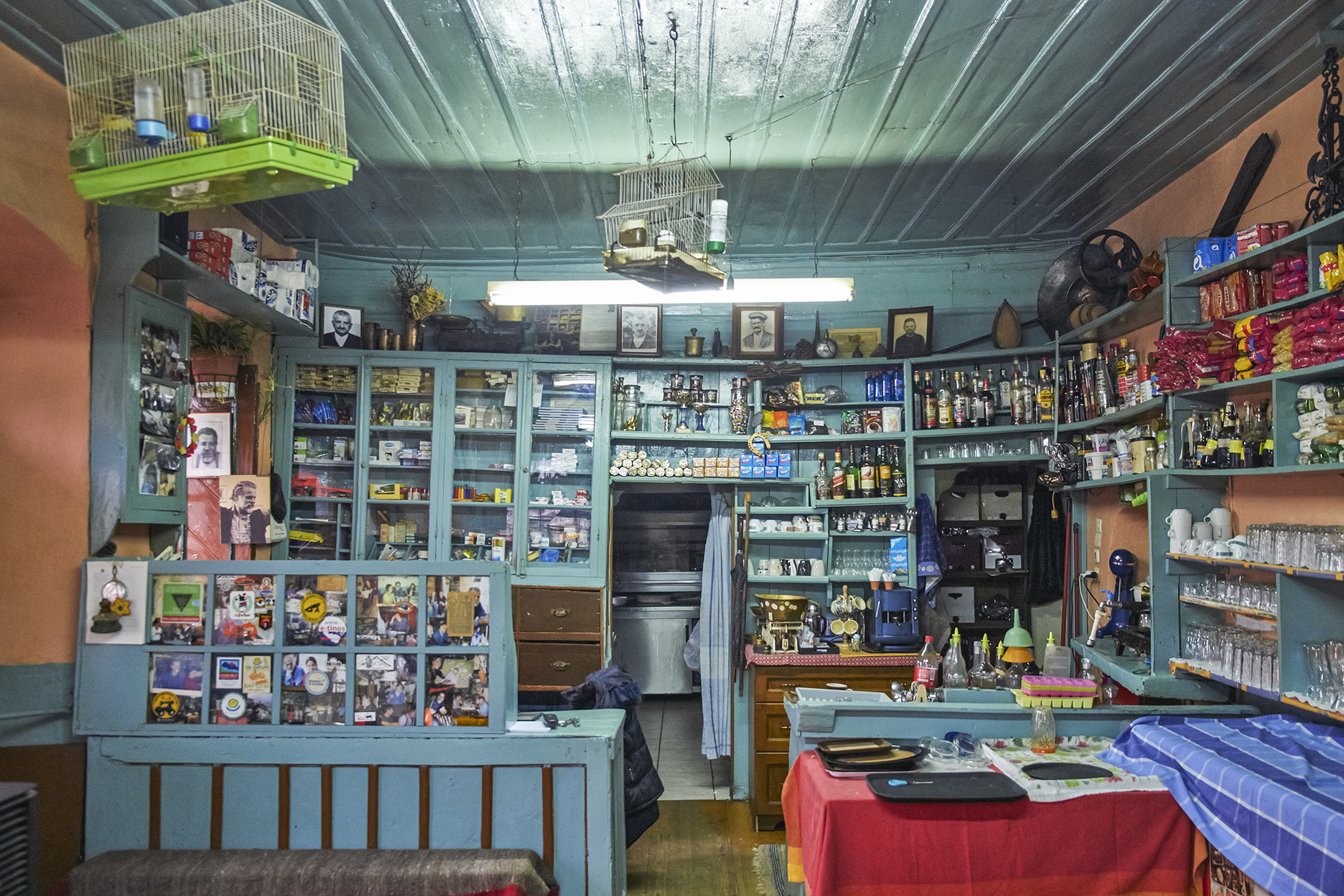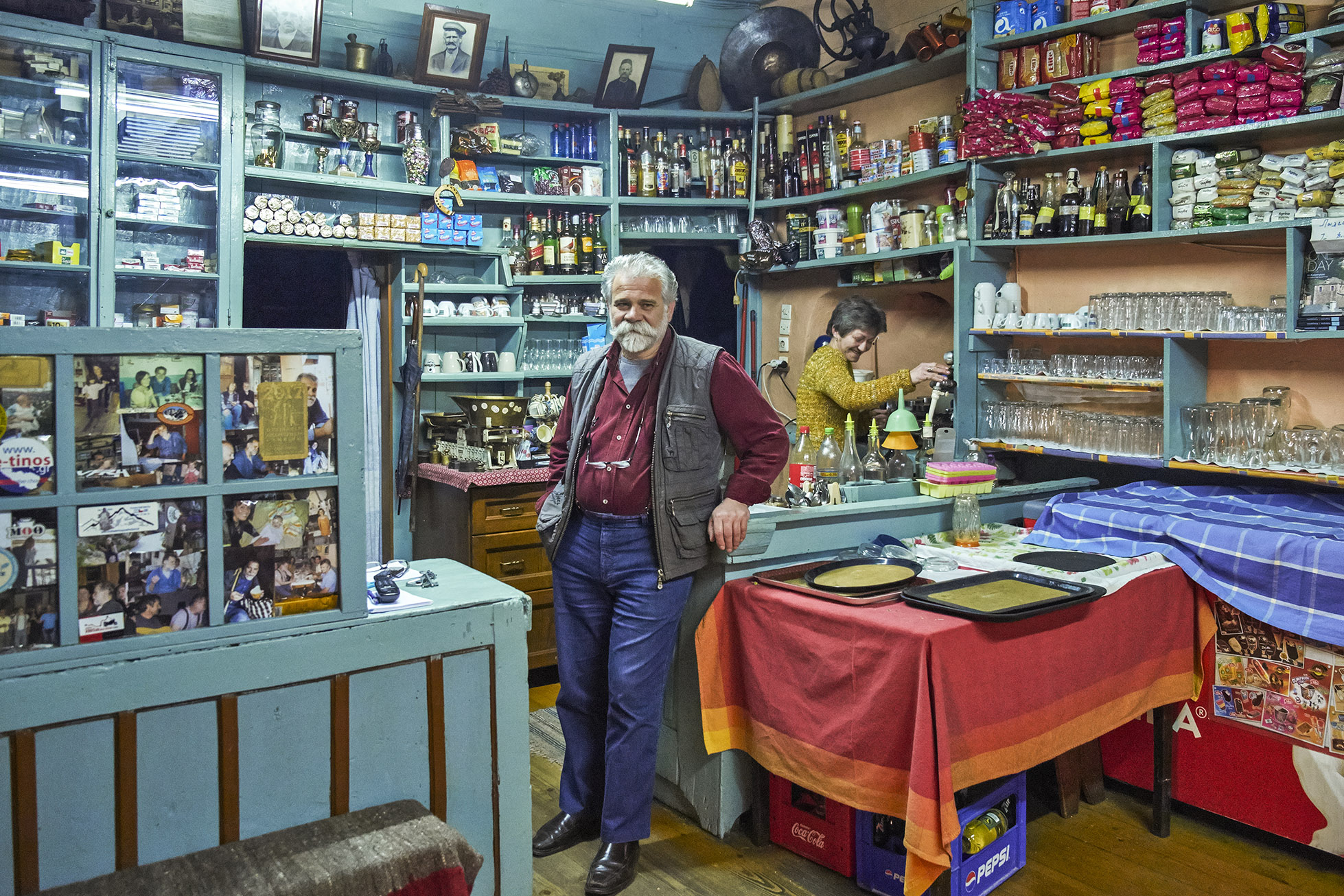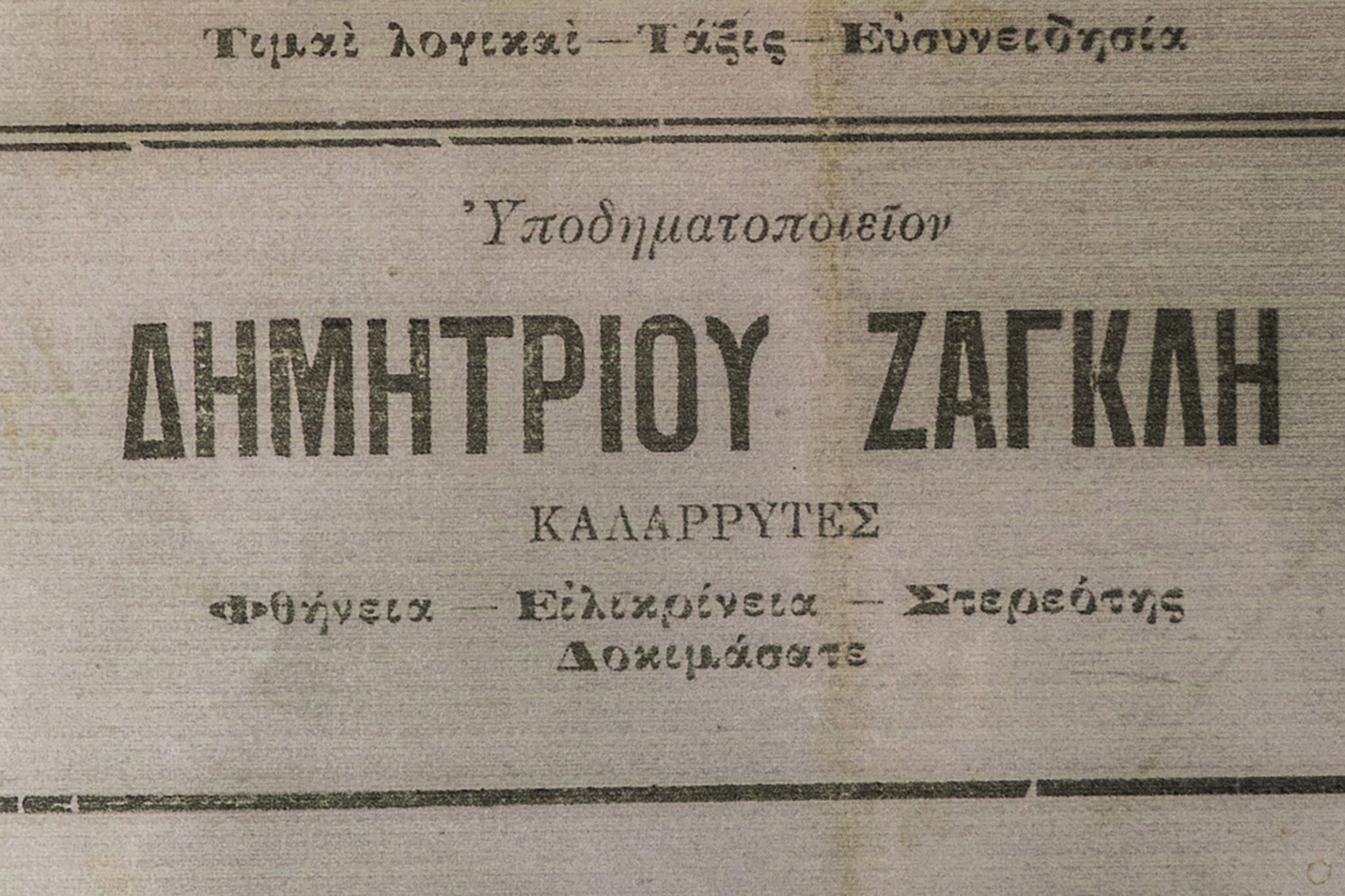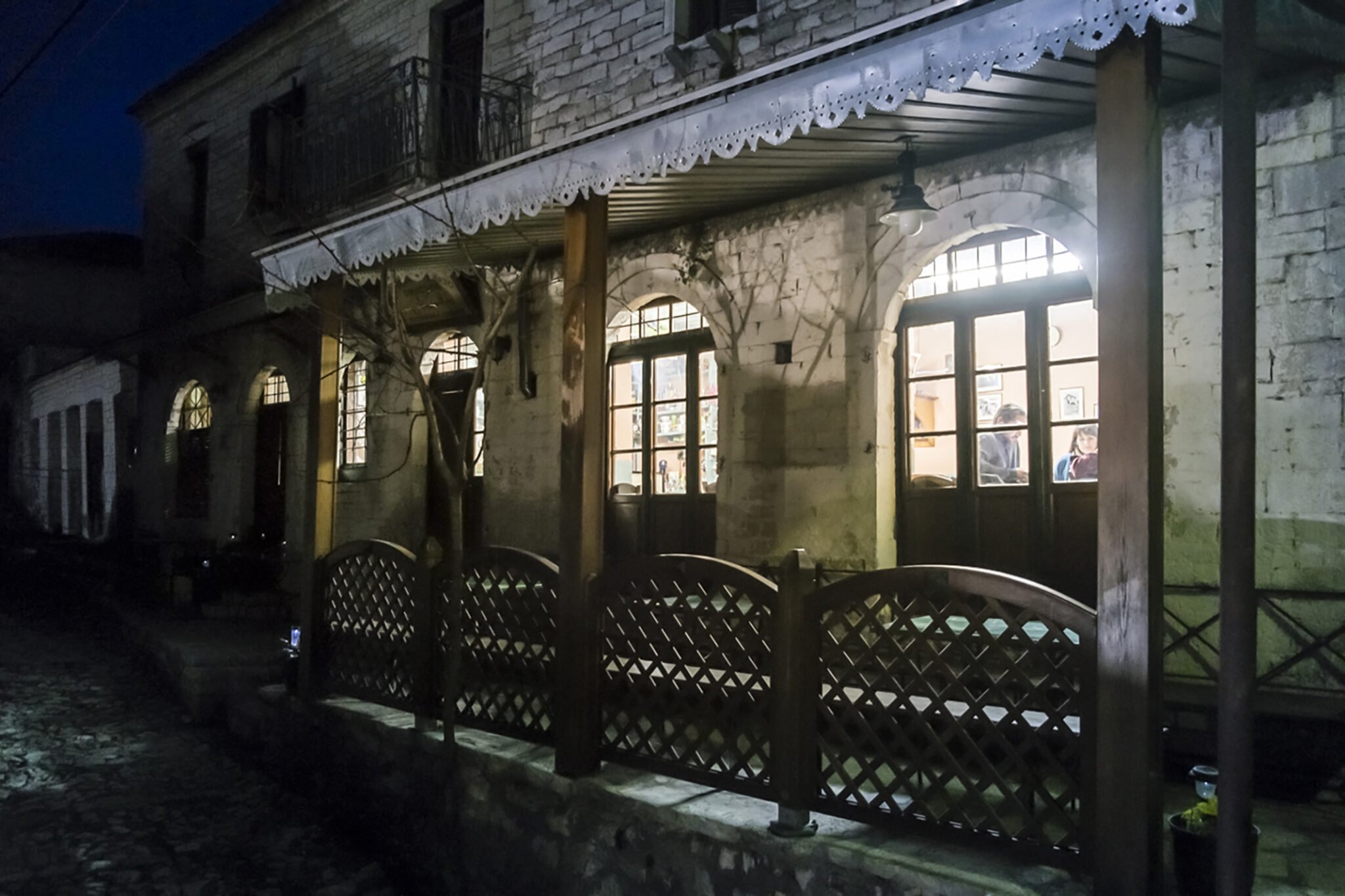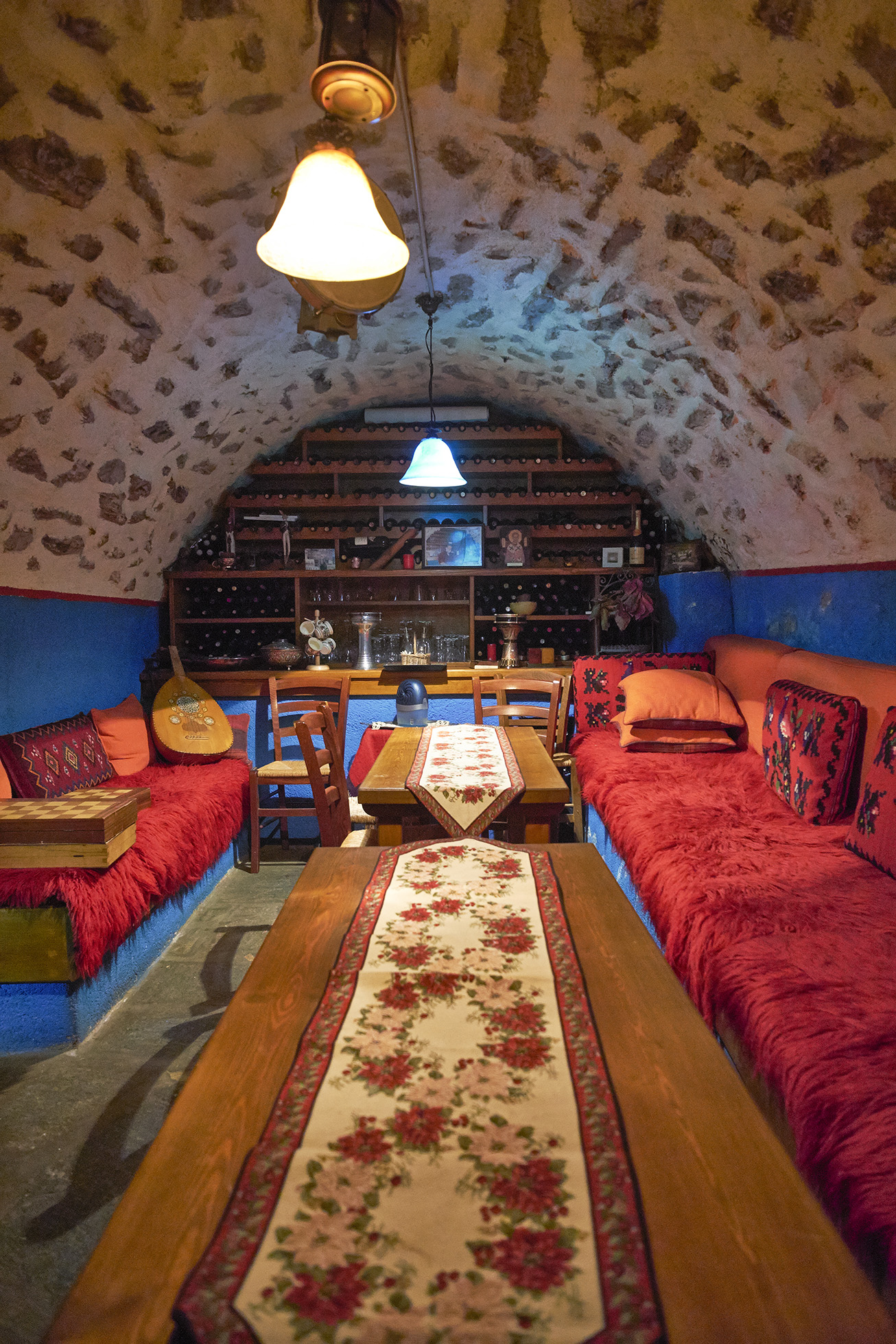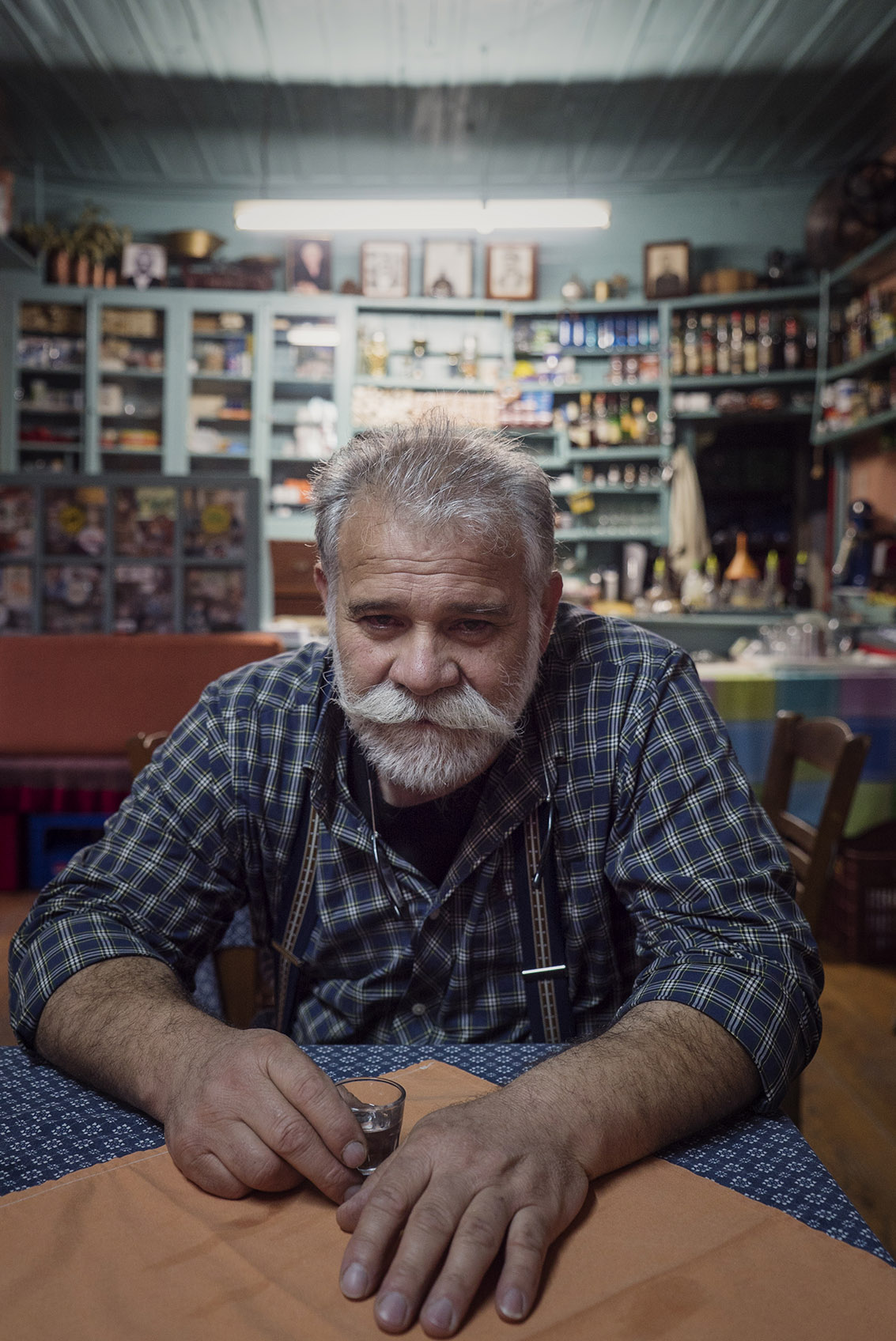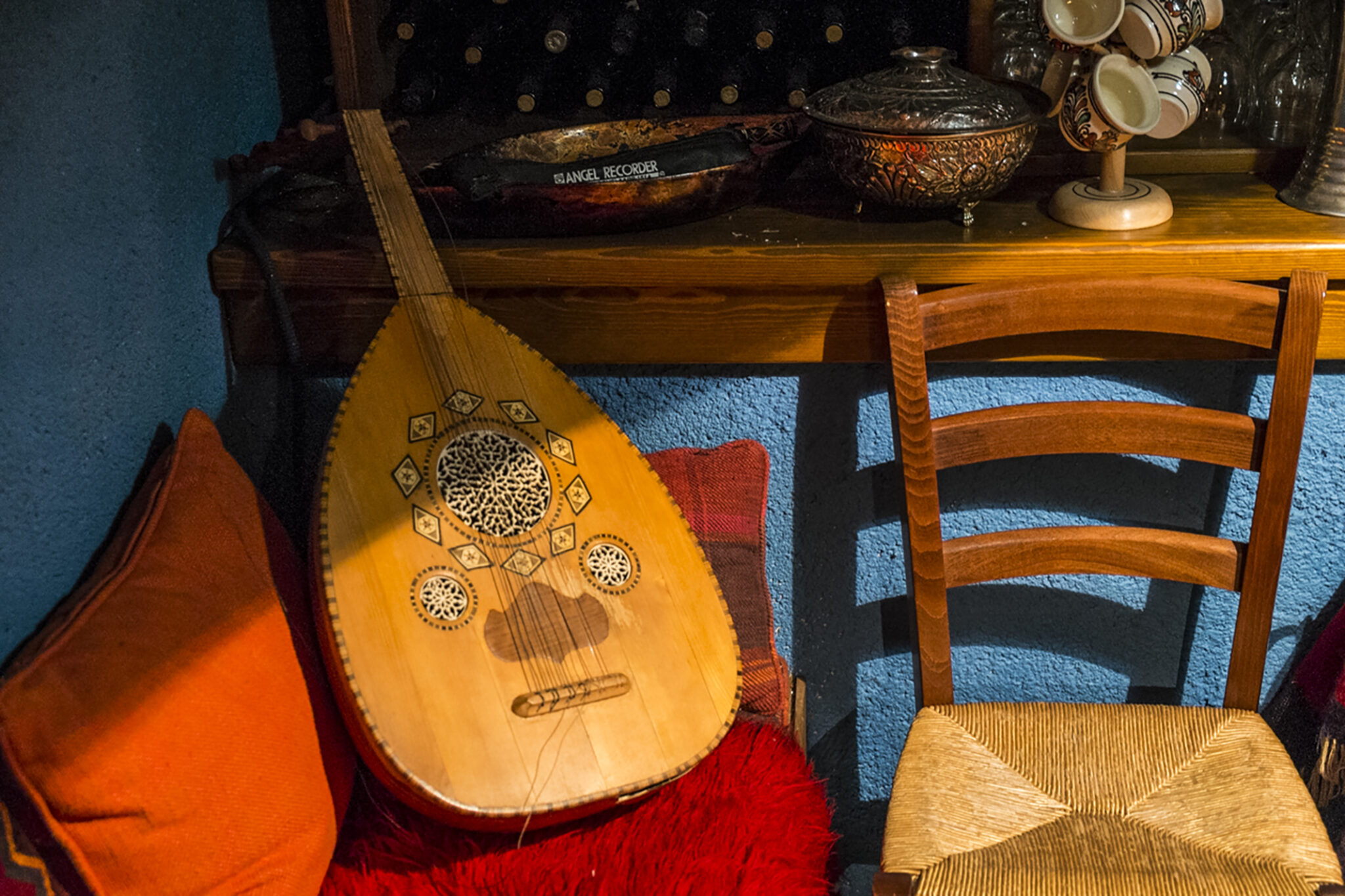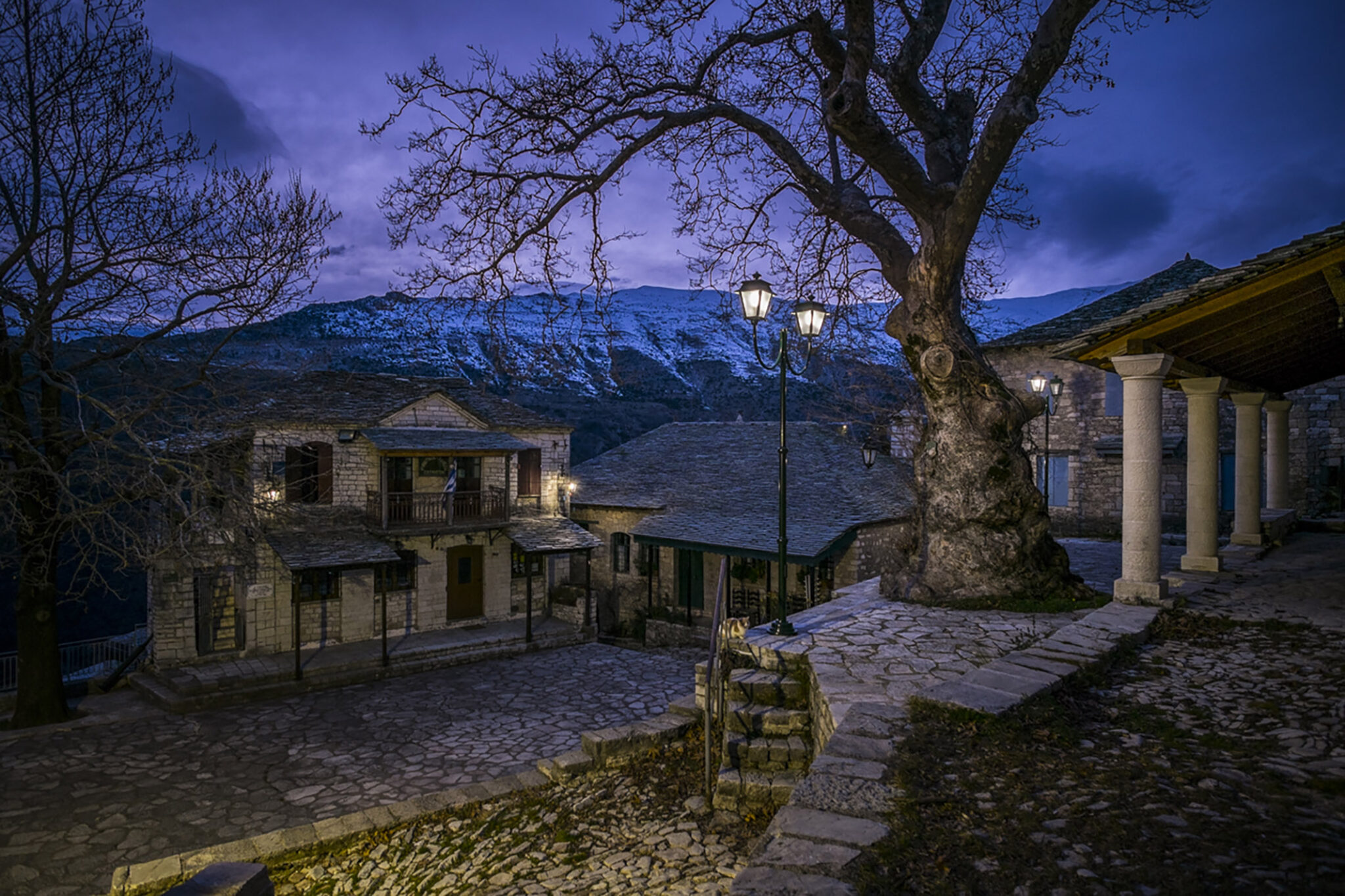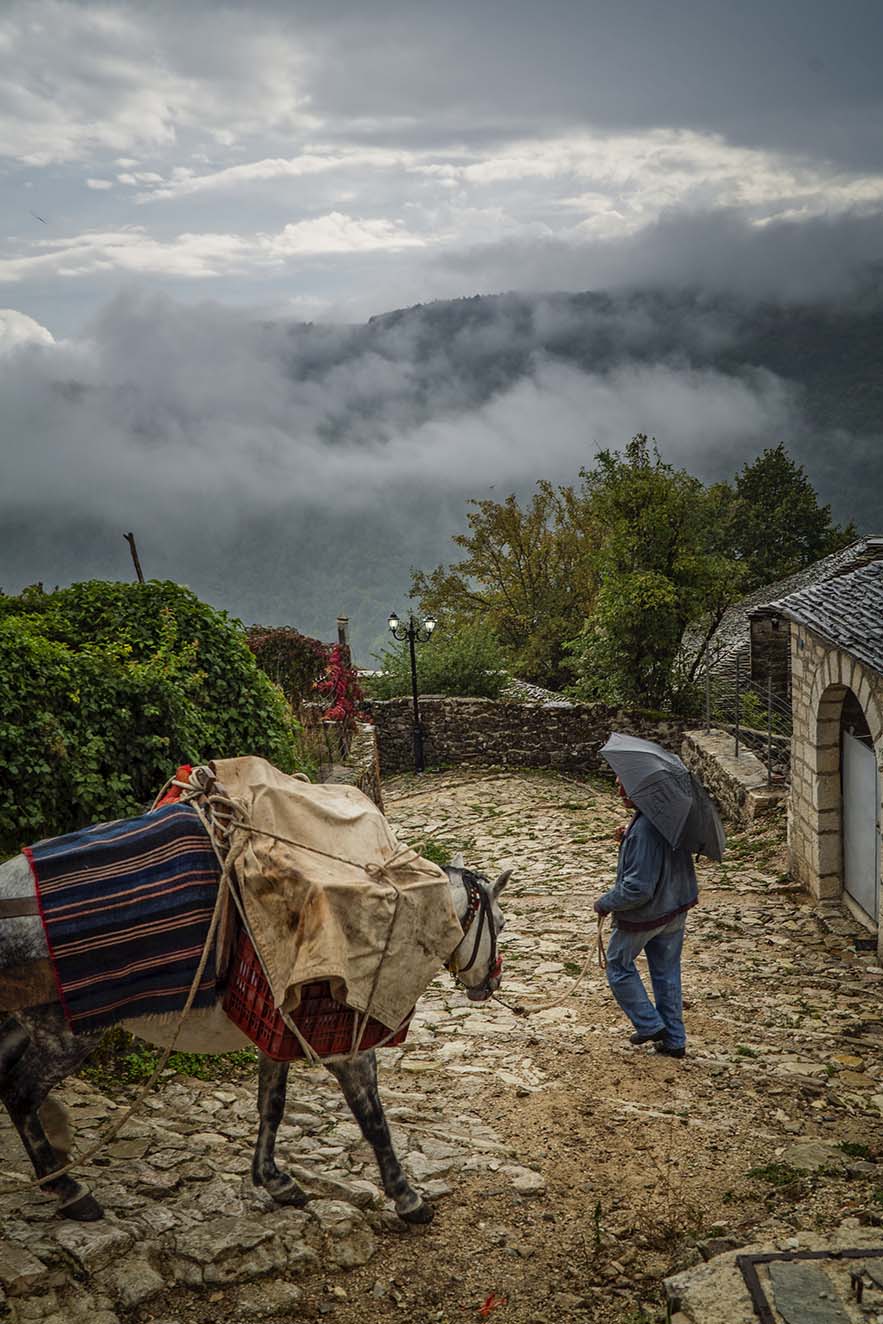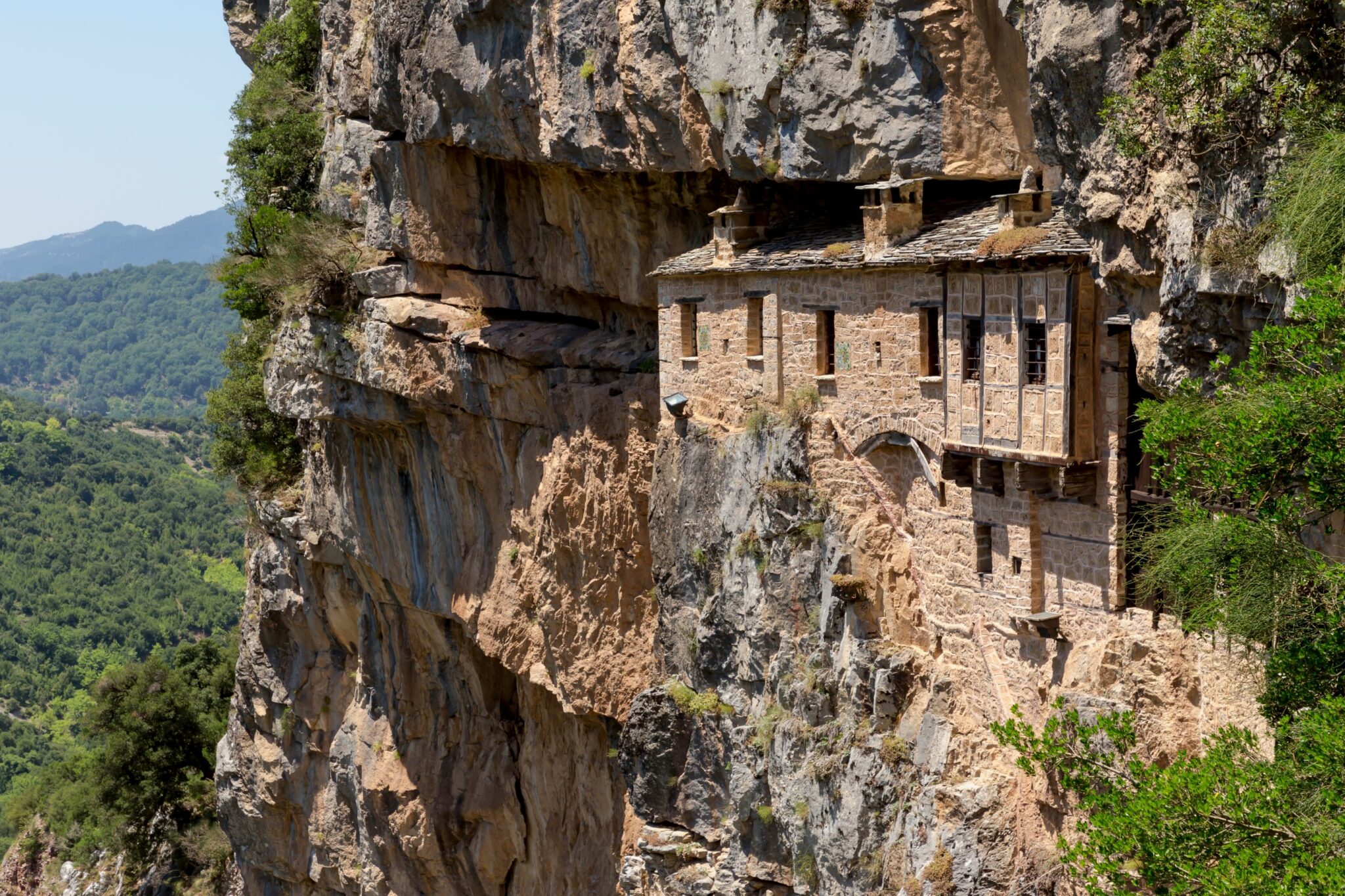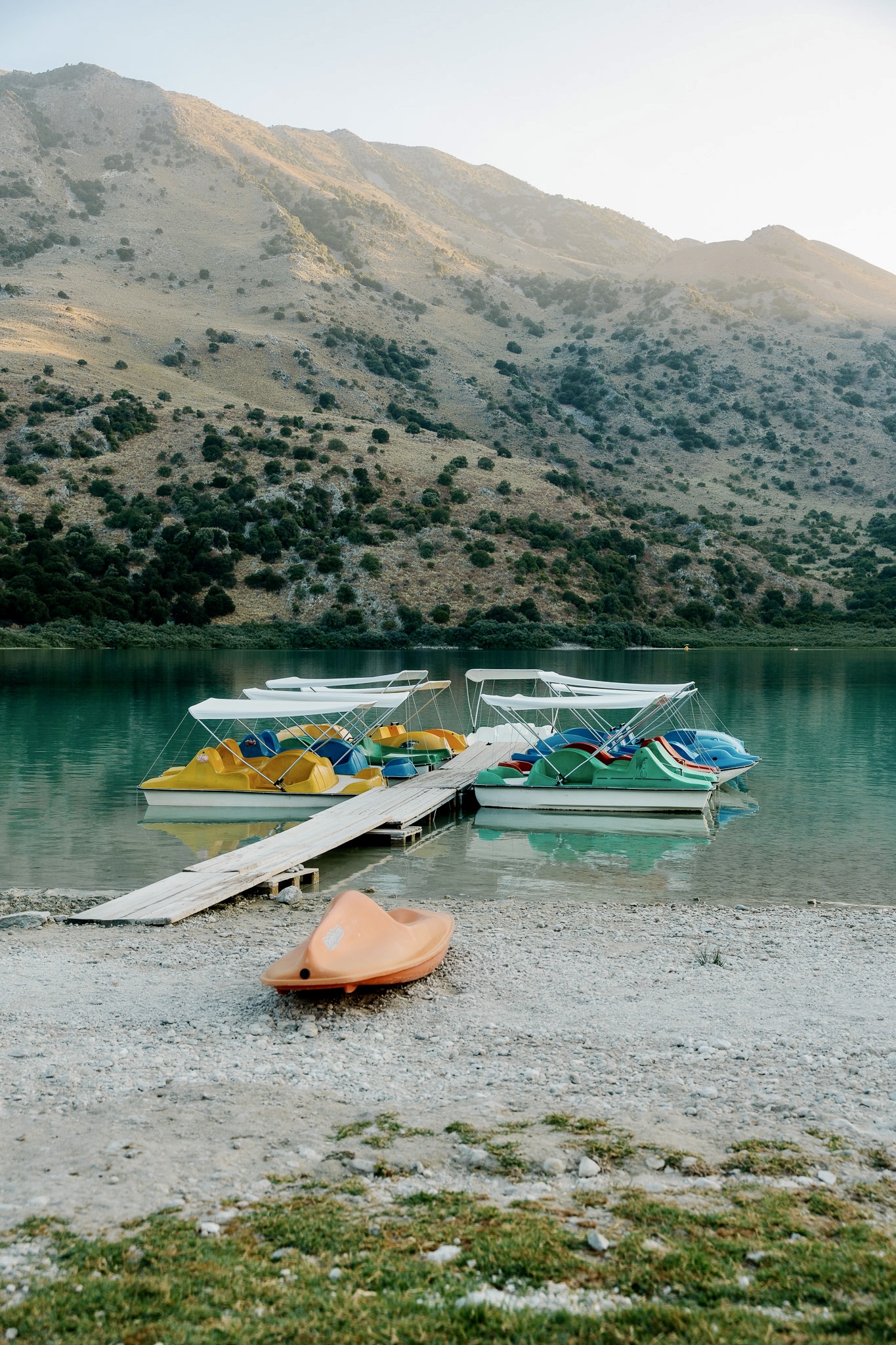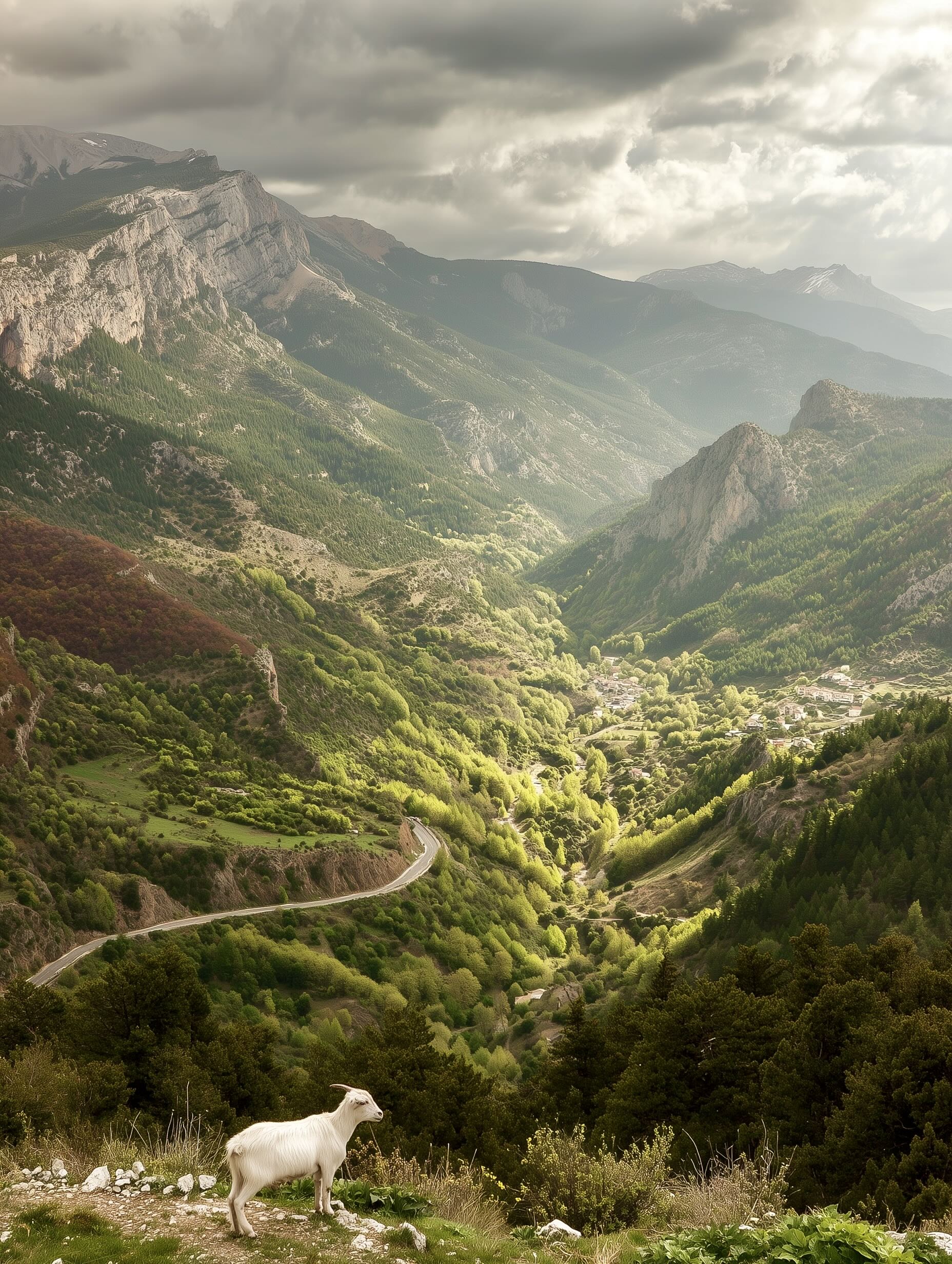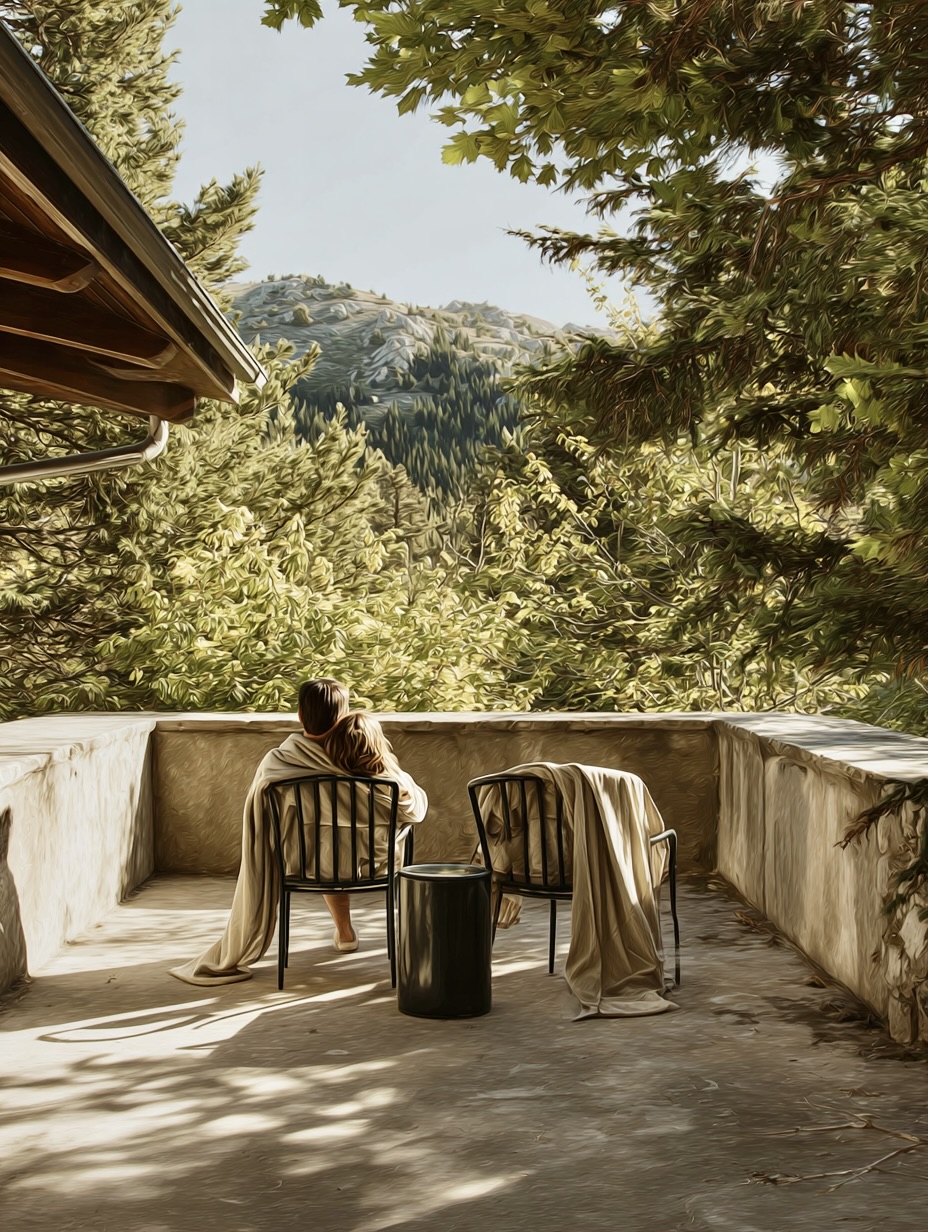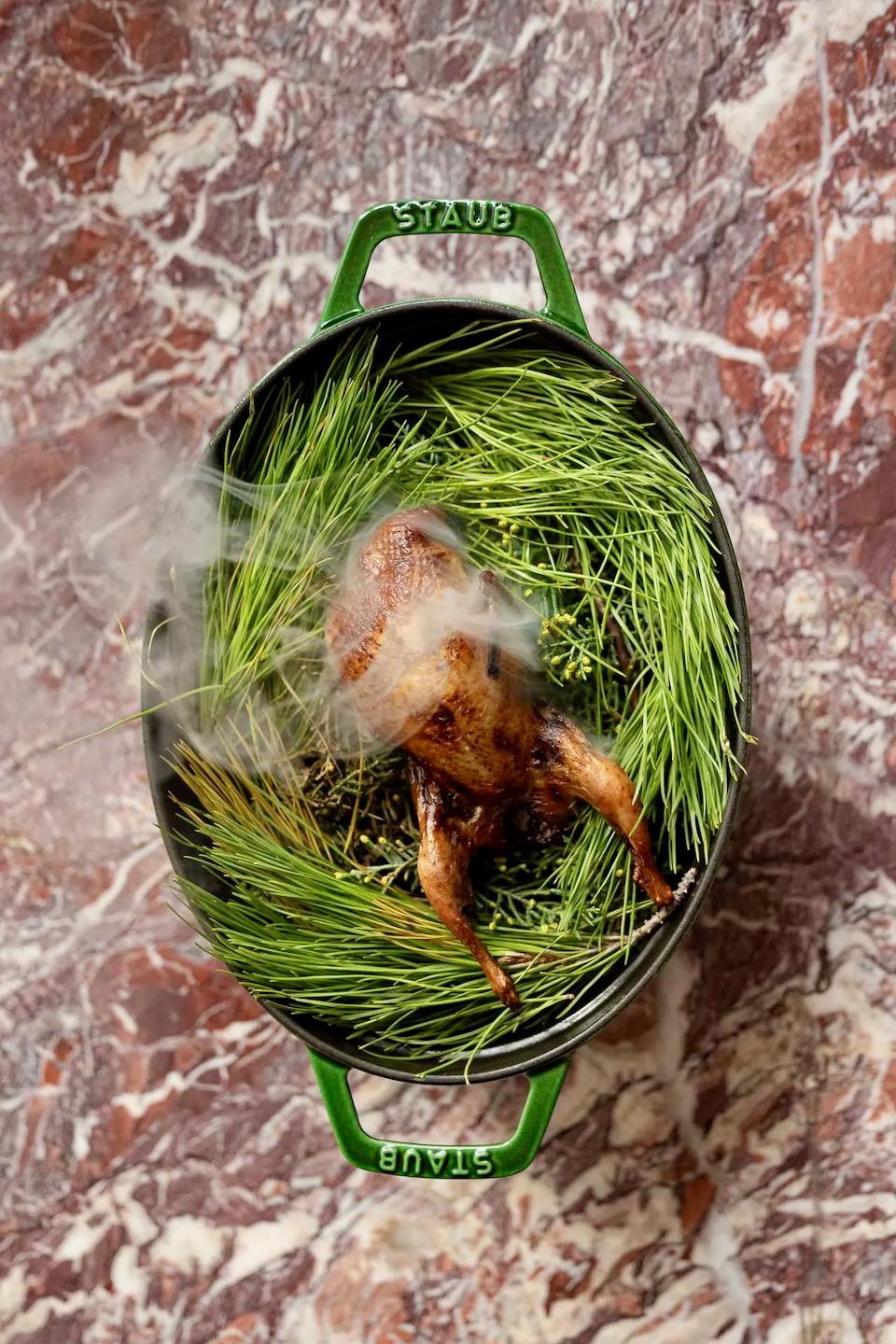Getting to Kalarytes was no mean feat. From Arta, we had to navigate 83 challenging kilometres of winding mountain roads, passing through villages like Pramanta and Melissourgoi along the way. Kalarytes and its neighbouring village, Syrrako, are two of the most beautiful mountainous areas in Greece, perched at an altitude of 1,120 metres and distinguished by their stunning architecture reminiscent of the Zagorohoria region.
We could wax lyrical about the village’s rich history in silversmithing, or the breathtaking trail that connects Kalarytes with Syrrako. However, we choose to focus on a particular establishment and the man who runs it: Napoleon Zaglis’s coffeehouse-restaurant-inn.
By the mid-1990s, Napoleon had spent over two decades living in Athens, working for a multinational company. It was then that he decided to return to his village and take over the kafenion (coffeehouse in Greek). While Zaglis was new to the business, the place has a considerable history. Established in 1840 by Napoleon’s great-great-grandfather, the coffeeshop has never once closed its doors, with the space undergoing only minor changes over the years, alongside necessary technological updates.
It stands as one of the oldest coffeehouse-tavernas in Greece, and in our opinion, is one of the most delightful. “My great-grandfather ran it as both a grocery store and a cobbler’s shop,” Zaglis tells us, showing us a 1925 local newspaper ad. “Dimitrios Zaglis’ Shoe Store: affordability, honesty, solidity, give it a try.”
Inside, time seems to have halted a few decades back. Old yet graceful shelves with a few grocery items, small tables, and chairs, everything fits just right with nothing superfluous. The kafenion-taverna creates an instant familiarity in visitors without even trying. And through the kitchen door, there’s “Bimsa,” a tiny, vaulted space with exquisite masonry and lovely colours for those seeking solitude.
When Zaglis returned to Kalarites, the permanent residents numbered no more than 30. Gradually, with improvements in the road network, the village experienced some tourist development that didn’t compromise its character – the café being a contributor to this. The kitchen serves traditional and excellent dishes such as rabbit stew and pork with leeks. An additional commendable trait of the owner is that he won’t let customers order more than what’s necessary to satiate their appetite. Although Zaglis didn’t carry on the family’s cobbler tradition, he created a charming guesthouse with tasteful, character-filled rooms that also respect the area’s tradition.
“Living in a small mountainous place comes with its challenges, but I wouldn’t swap this connection with nature and the peace it brings for anything,” he explains. This tranquility can be punctuated by a spontaneous celebration with locals or visitors, someone might start playing a musical instrument, and the party might continue until the next morning.
The last image from our visit to Kalarytes was probably the most striking. Napoleon Zaglis, aside from being the owner of the cafe, is also a chanter at the village church. He opened the door to the Saint Nicholas church for us and let us admire its splendour. At the same time, he was chanting. His voice was on par with the best in the genre. An auditory experience that will accompany us every time we think back on our charming trip to this lovely corner of Epirus.
Some tips and information for a trip to Kalarytes and Tzoumerka
Visitor cars are not allowed to enter Kalarytes or Syrrako. There are four parking spots outside the village.
If you visit in the summer, you will enjoy the festival of Agia Paraskevi on July 26th. At the celebration, local farmers serve up cooked meat and yoghurt. Also, a big two-day celebration occurs in the village on August 15th, the day of the Assumption of the Virgin Mary.
Kalarytes is the hometown of the globally eminent Greek jeweller Sotirios Bulgaris, founder of the internationally renowned Italian house Bvlgari, by now synonymous with finesse and luxury.
The best and most enjoyable way to visit the neighbouring village of Syrrako is via the trail that connects the two. It will take you approximately 1.5-2 hours to get from one village to the other, depending on your physical condition.
Even if religious tourism doesn’t usually appeal to you, it’s worth visiting the Kipina Monastery. A monastery likely from the 13th century that seems to hang in the air as it’s wedged into a rock opening.
There are also exceptionally beautiful walks along the banks of the Kallaritikos River. Given the area’s challenging road network, it’s good to be sure of your car’s capabilities.
Read also:
Lush Ano Vlasia Village in Mountainous Achaia



